Photographs: Adrees Latif/Reuters. Iwan Azis
Catastrophic flooding and crop losses in Thailand - the world's leading rice exporter - are raising concerns that another food crisis may be in the offing.
Further disquieting is the possibility that the world may have already entered a new era in which persistently high food prices are the "New Normal."
At a time when policymakers are grappling with a host of thorny economic issues, the possibility may be unwelcome, but must not be ignored.
...
A big food crisis likely, prices to rise further
Image: A worker leaps over stacked sacks of paddy at a wholesale grain market in the northern Indian city of Chandigarh.Photographs: Ajay Verma/Reuters.
Although volatility in commodity markets is nothing new, there are worrying signs that food price fluctuations are now taking place within a much higher bandwidth than ever before.
Even when prices dip they remain high by historic standards, and when prices rise it's enough to put a serious dent in families' budgets.
For Asia's poor, who already spend 60 per cent of their household budget on food, even the smallest fluctuation in food prices forces unenviable choices on where best to devote their scant resources.
...
A big food crisis likely, prices to rise further
Image: Men fill a basket with pineapples while unloading them from a supply truck at a fruit wholesale market in the western Indian city of Ahmedabad.Photographs: Amit Dave/Reuters.
More money for food means less for health care, education, or other important expenditures. It also means that those striving to escape poverty are less likely to do so, while millions more risk falling below the $1.25-a-day poverty line.
The Asian Development Bank estimates that a 10 per cent rise in domestic food prices in developing Asia threatens to push an additional 64 million people into poverty.
With food price inflation in many emerging Asian economies averaging 11 per cent in the first half of 2011 alone, the growing numbers of families facing the scourge of dire poverty are staggering.
...
A big food crisis likely, prices to rise further
Image: A green grocer counts money at a market in central Seoul.Photographs: Lee Jae-Won/Reuters.
Much of the sharp increase in the region's food prices is due to production shortfalls caused by such extreme weather events as droughts and floods and subsequent export bans by some food producing countries.
Growing appetites for grains, oil, seeds, sugar and livestock in emerging economies like the People's Republic of China and India are exerting further upward pressure on supply.
There has also been a growing trend over the past decade to "financialise" commodities, turning food into an important tradable asset class, just like stocks, bonds, currencies, or real estate.
...
A big food crisis likely, prices to rise further
Image: An egg vendor arranges eggs as she waits for her customers at a market in Beijing.Photographs: Soo Hoo Zheyang/Reuters.
As a result, movement in one major asset – say, real estate prices in the US – can drive food prices in other parts of the world to levels well above what real supply and demand might dictate.
The current super-easy money policy in industrial countries may have also driven the financialisation of commodities.
And then, of course, there's the weakness of the US dollar, in which most food commodities are denominated, as well as high oil prices, which raise costs at almost every step of the food supply chain, from fertiliser and animal feed, to fuel for bringing food from the farm to the kitchen table.
...
A big food crisis likely, prices to rise further
Image: Vehicles drive by as a melon vendor waits for customers on a sidewalk in Beijing.Photographs: Soo Hoo Zheyang/Reuters.
With a "New Normal" of persistently high and volatile food prices here to stay, what are policymakers to do?
There are no easy solutions, but when faced with bouts of soaring food prices, governments must be both pragmatic and flexible.
Tightening monetary policy – like raising interest rates – is a standard tool to combat inflation and cool economic overheating. It is a fairly ineffective tool if the inflationary pressure is supply-side, however, and relatively blunt if price movements are volatile.
...
A big food crisis likely, prices to rise further
Image: A vendor sits amid piles of Chinese watermelons as he eats a cup of instant noodles at a market in Huaibei.Photographs: Reuters.
Rate hikes take months to show results, and if overblown can tighten the economic leash until it chokes growth, especially for small and medium businesses.
Inflation targeting is also of questionable value if the public does not view the measures as credible. Consumers need to know what to expect.
With food price inflation on the rise, social programmes that target the most vulnerable members of society from the effects of higher commodity prices can be used where budgets allow.
...
A big food crisis likely, prices to rise further
Image: Customers select green peppers and chilies at a market in Shenyang, Liaoning province.Photographs: Reuters.
This measure is less costly for the economy as a whole compared to tightening monetary policy.
There are other levers policymakers can pull, including a broad range of supply-side policies that can reduce bottlenecks in commodity-based industries, improving access to global markets and increasing productivity.
The further reduction of trade barriers between countries – to counter local food shortages through imports from surplus producers – should be pursued through regional cooperation and other forums.
...
A big food crisis likely, prices to rise further
Image: Farmers plant saplings in a rice field in Shariefabad on the outskirts of Srinagar.Photographs: Fayaz Kabli/Reuters.
Global markets where commodity-based financial derivatives are traded and priced should be regulated and closely supervised to avoid excessive volatility, or the formation of price bubbles. They can also be used effectively as a hedging tool to manage risk.
In large countries overall food supply may not be a problem, yet there are still serious problems in some sub-national regions.
In such instances, improved distribution channels to ensure a more reliable supply of commodities to remote and isolated areas can play a critical role.
...
A big food crisis likely, prices to rise further
Image: Farmers walk with their camels carrying watermelons toward a market on the banks of river Ganges .Photographs: Jitendra Praksh/Reuters.
Taken together, it is clear that a globalised approach is needed to effectively address food price inflation.
Countries normally address their own needs as they see best, but the demands of rapid economic growth and development increasingly cross borders. While acting nationally, policymakers will need to think globally and coordinate regionally.
Only then can we be assured enough resources will be available to keep growing appetites satisfied at reasonable costs.
The author is Head of the Asian Development Bank's Office of Regional Integration.


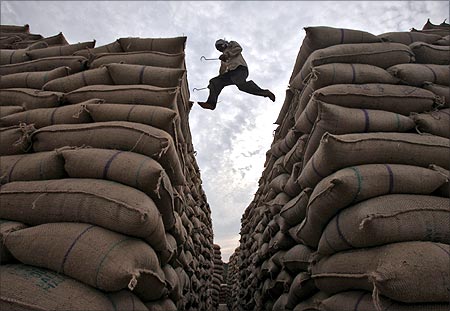
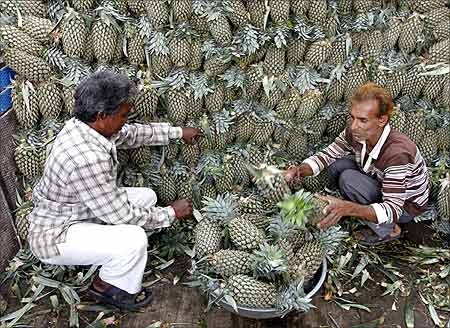
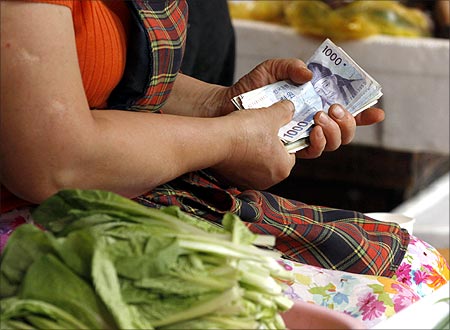

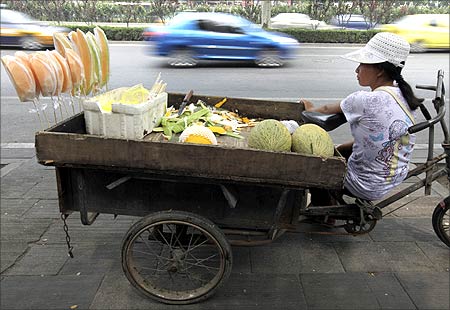


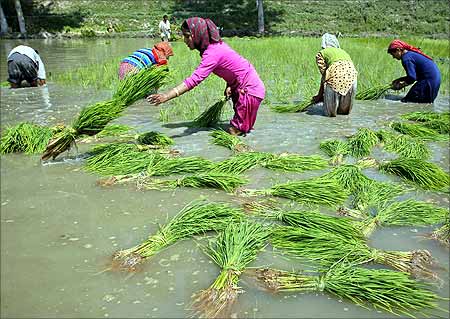


article